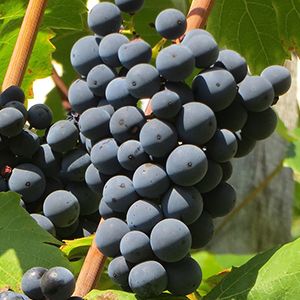 DELIVERY FROM £4.95
DELIVERY FROM £4.95 FREE DELIVERY FOR ORDERS OVER £100
FREE DELIVERY FOR ORDERS OVER £100Home » Community » Wine and Grape Guide » Dindarella

The Dindarella grape is a little-known red variety native to the Veneto region, particularly associated with Valpolicella, one of Italy’s most iconic wine areas. Though its cultivation is now extremely limited, Dindarella has deep historical roots and plays a subtle yet significant role in the region's winemaking heritage.
Dindarella is genetically related to other traditional Valpolicella grapes, showing a strong affinity with Rondinella and a moderate connection with Corvina, two cornerstone varieties of Amarone and other classic Valpolicella wines. Historically, both Dindarella and Pelara were cited by Acerbi in 1825 as distinct varieties cultivated in the area. However, recent genetic studies have reclassified Pelara as a biotype of Dindarella, further highlighting the complexity of indigenous grape biodiversity in Veneto.
In the 1970s, the Experimental Institute for Viticulture in Conegliano initiated efforts to recover this nearly forgotten vine. These efforts culminated in 1987, when Dindarella was officially included in the National Register of Grapevine Varieties, recognizing its enological and genetic value.
The vine is characterized by good vigor and consistent productivity. Its bunches are large, pyramidal, and medium compact, often with one or two wings. The berries are black, medium-sized, and irregular, with a prominent navel and waxy, red-blue skin. The leaves are five-lobed and pentagonal, typical of many ancient Italian vines.
When vinified, Dindarella produces a deep ruby red wine with an aromatic profile that combines the fresh fruitiness of berries with underbrush notes, evolving into more pronounced hints of stewed fruit and warm spices. Though seldom bottled as a monovarietal wine, Dindarella can add elegance, color, and aromatic complexity to blends, particularly in Valpolicella and Amarone-style wines.



Before we say ciao, why not join our newsletter & stay up to date on everything happening on planet Italyabroad.com